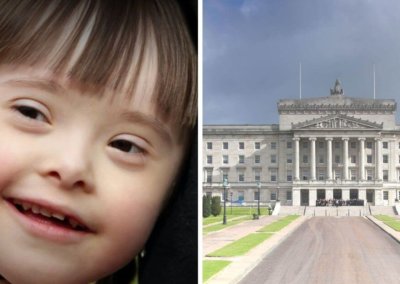Israel’s abortion rate has continued a 32-year decline as the number of women seeking an abortion fell from 18.6 per 1,000 in 1988 to 8.4 per 1,000 in 2019 for women between the ages of 15 and 49.
According to new data from Israel’s Central Bureau of Statistics (CBS), decreases in referrals to abortion committees, from which approval is required before undergoing an abortion, show that the number of women requesting an abortion has been trending downward since 1988.
In the most recent year for which data is available, 2019, 17,688 women in Israel requested an abortion via these committees. 99.4% of these requests were approved and 106 were rejected.
CBS also reveal significant variation in the abortion rate depending on religious affiliation. Druze (a minority Abrahamic religion) and Muslims have the lowest rate of abortion referrals in Israel with 5.6 and 6.2 referrals per 1,000 respectively. This is followed by Christian Arabs with 8.4 and Jews with 8.9 referrals per thousand women. The highest rate of referrals at 10 per 1,000 women, was found among the unaffiliated or non-religious and non-Arab Christians.
Sharon Orshalimy, a doctoral candidate at Ben-Gurion University of the Negev said: “We have the ultra-Orthodox community, and they don’t do abortions and they have a very high birthrate, and we also have the Bedouin community”.
Why has the abortion rate been falling?
Orshalimy said there are number of reasons for the overall reduced rates of referrals to abortion committees. While the absolute number of abortions has stayed more or less constant, the overall population has grown, so the proportion of abortions to live births has declined.
Additionally, in Israel, where abortion was officially legalised in 1977, abortions can only be legally performed under certain circumstances and with the approval of a termination committee. Orshalimy suggests that the bureaucracy of getting an abortion and this itself creates an additional barrier, thus lowering the abortion rate.
There are usually three people on an abortion committee: two physicians, one of whom is an obstetrician/gynaecologist, and a social worker. Israeli law mandates that at least one of the three panelists must be a woman.
The group can approve the medical procedure only under the following criteria: the patient is under 18 or over 40; the pregnancy is out of marriage; the baby is the result of rape or incest; the mother’s life is at risk; carrying the baby to term would result in mental or physical distress; or the child would have severe medical problems.
Abortion rate on the rise in England and Wales
Conversely, over the same time period, the abortion rate for women between the ages of 15 and 44 in England and Wales increased from 14.2 per 1,000 in 1988 to 18.0 per 1,000 in 2019.
The abortion rate for 2020 looks likely to be even higher since statistics released last September show there has been a significant rise in the number of abortions performed in the first six-months of 2020, compared to the figures recorded in 2019 over the same period.
The statistics, released by the Department of Health and Social Care, show that 109,836 abortions were performed for English and Welsh residents in the six months between 1 January and 30 June 2020.
This is an increase of 4,296 from the same time period in 2019, where 105,540 terminations were performed. Abortion numbers for 2019 were the highest ever recorded in England and Wales over a full calendar year, at 209,519, with 207,384 being performed for English and Welsh residents.
However, at the current rate, 2020’s abortion numbers look set to eclipse 2019’s total.
The total number of abortions that took place in England between 1 January and 30 June 2020 was 104,604, an increase of 3,820 when compared to 100,784 in 2019.
The total number of abortions that took place in Wales between 1 January and 30 June 2020 was 5,232, an increase of 476 when compared to 4,756 in 2019.
Right To Life UK spokesperson, Catherine Robinson, said: “It’s great to see this continued decline in the abortion rate in Israel”.
“Among other causes, as the researcher in Israel has suggested, it is likely that the moderate legal barriers to abortion in Israel, when compared to those in England and Wales, has contributed to the decline in the abortion rate”.











